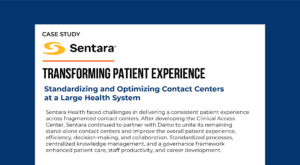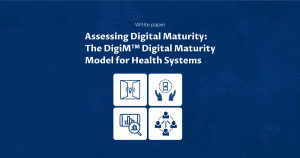Healthcare systems must have a strong data and analytics framework
Listen to the full conversation
Data is the language of transparency in healthcare
In the post-COVID-19 era, it is important to ensure safety of both patients and physicians by using tools that can help augment care delivery, keeping in mind ease of access and security. The amount of data that is flowing in every day, and is available, can enable technology to monitor a larger group of patients by a smaller number of caregivers or providers. Healthcare systems must have transparency around patient data to explore and implement improvements within their systems. Data is the language of transparency; ease of availability and accessibility of data can help patients know more about their health information.
Automated tools in healthcare help maintain connectedness with patients
Monument Health is in South Dakota, where fifty percent of its population resides in rural areas. Before the pandemic hit, the health system was already using several antiquated tools such as telephones, paper fliers, questionnaires, and others to cater to the population spread apart by miles. The health system was in the process of implementing a telehealth strategy over a horizon of two years. As the pandemic hit, they were forced to convert this into a two months project. And soon started running virtual consultations using tools like COVID-19 nurse triage, remote patient monitoring, online testing, and more to manage their patients. Using automated tools, along with personalized patient experience, is the key to improve healthcare delivery.
“From a patient access standpoint, a major opportunity is a combination of using some automation, but also bringing in the personalization, that’s going to be the key in healthcare. Automation is how we maintain a personal experience using automated tools so that our teams can do more and can take care of more people, but it still feels personalized.”– Stephanie Lahr
Health systems must focus their shift from optimization to transformation
In the wake of COVID-19, the healthcare industry has seen dramatic changes both from the providers and patient’s standpoint. It is time for health systems to shift their focus from optimization to transformation. It is also essential to have strong partnerships and take the lead to transform the industry further.
“Optimization of work will always be there, but we’ve got to start thinking transformation and we have to as IT leaders, be willing to lead the charge tightly connected to our clinical and operational counterparts. ” – Stephanie Lahr





